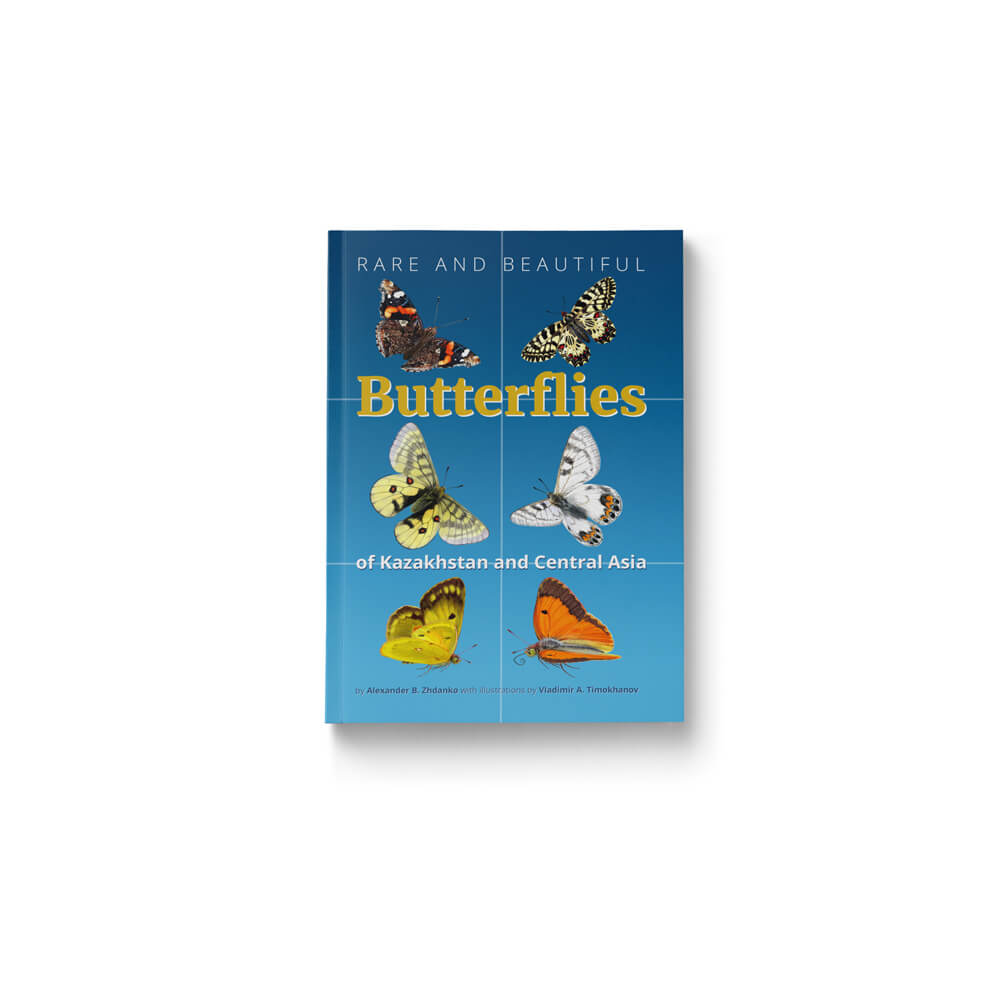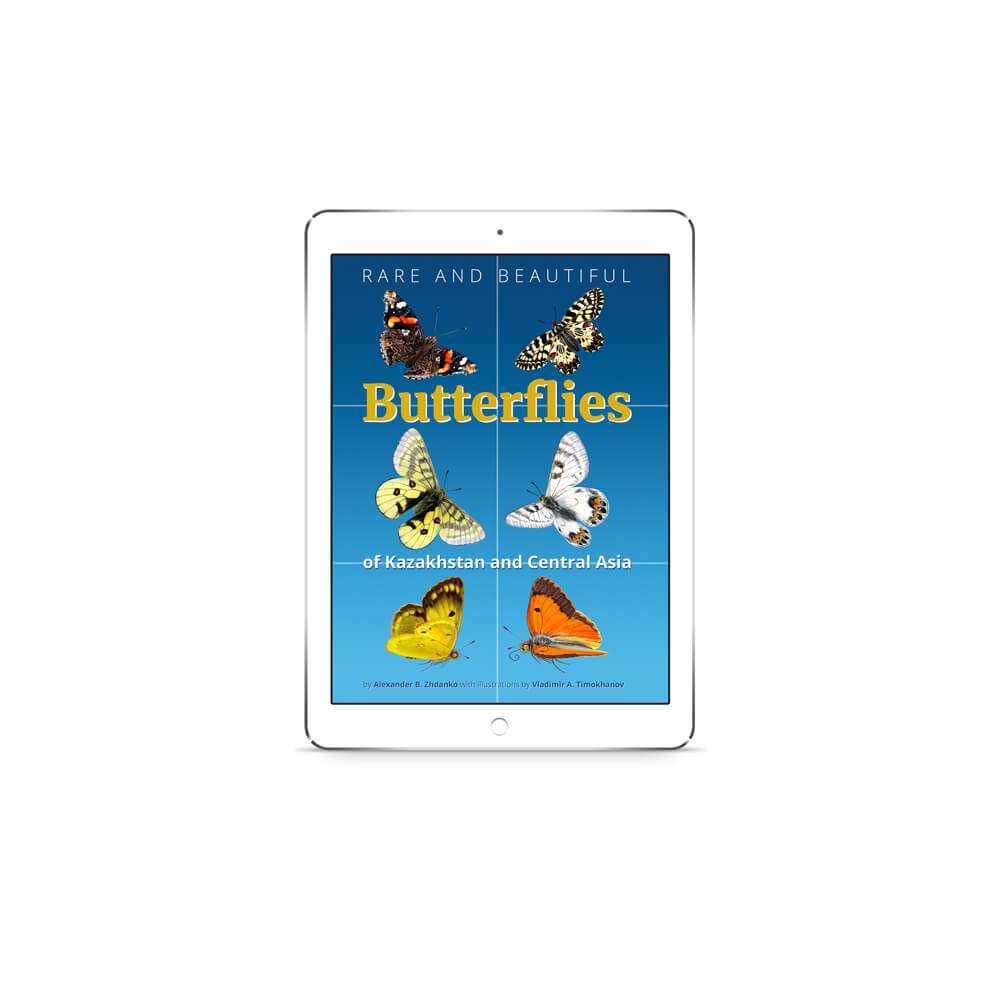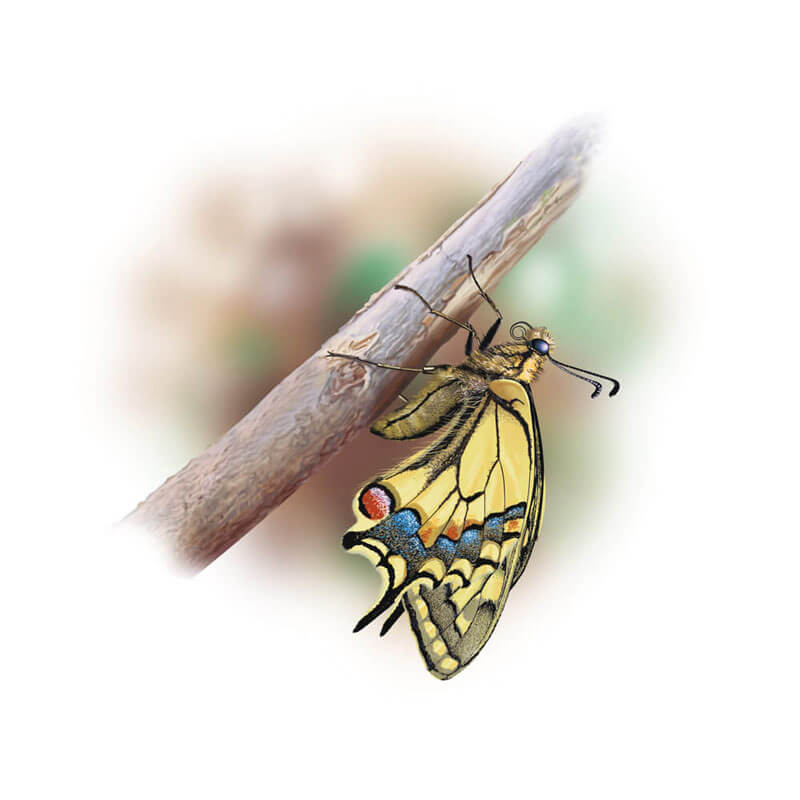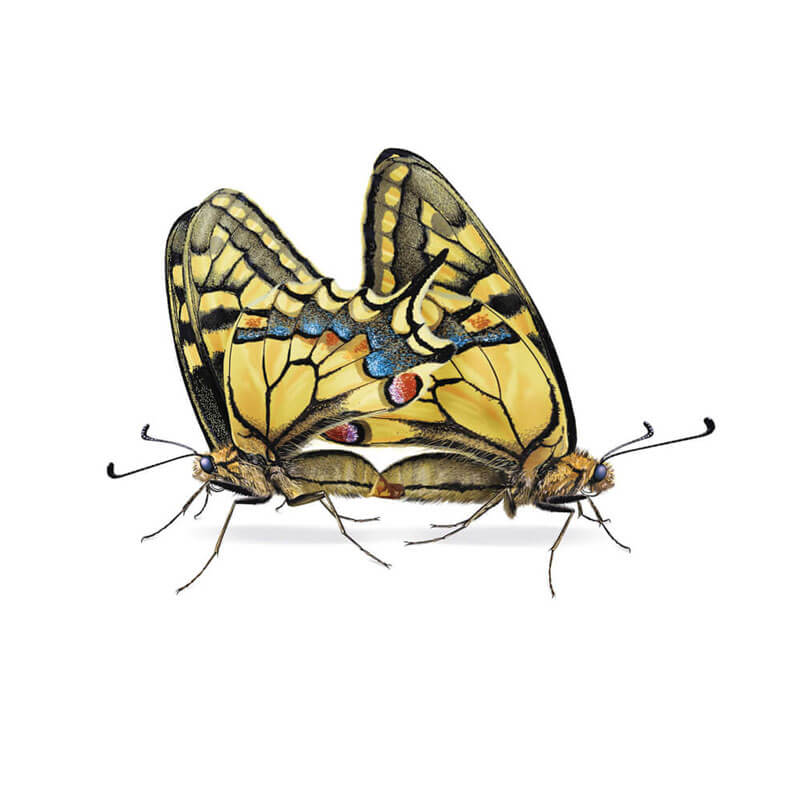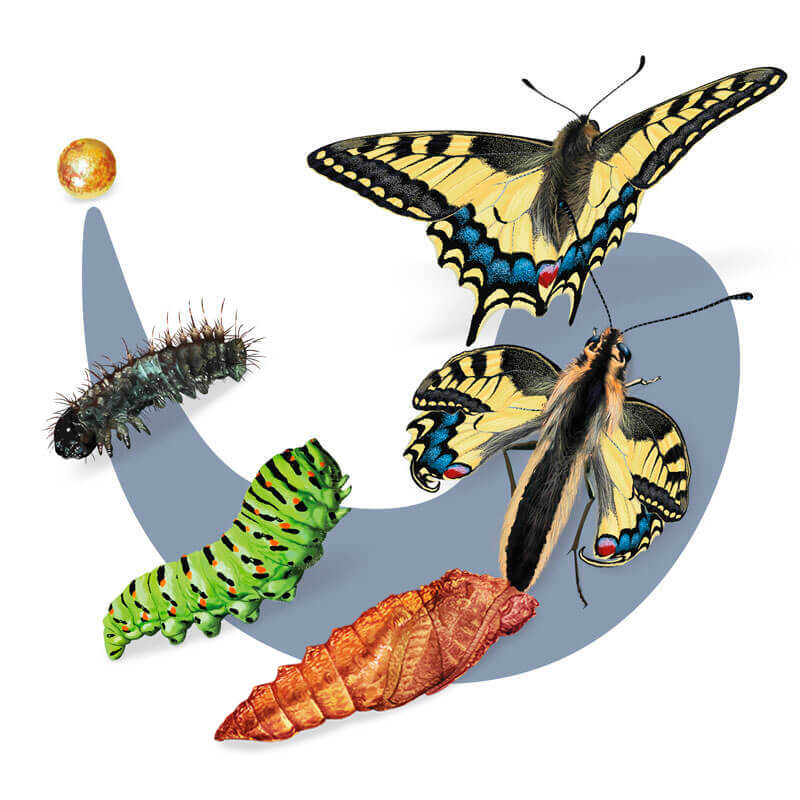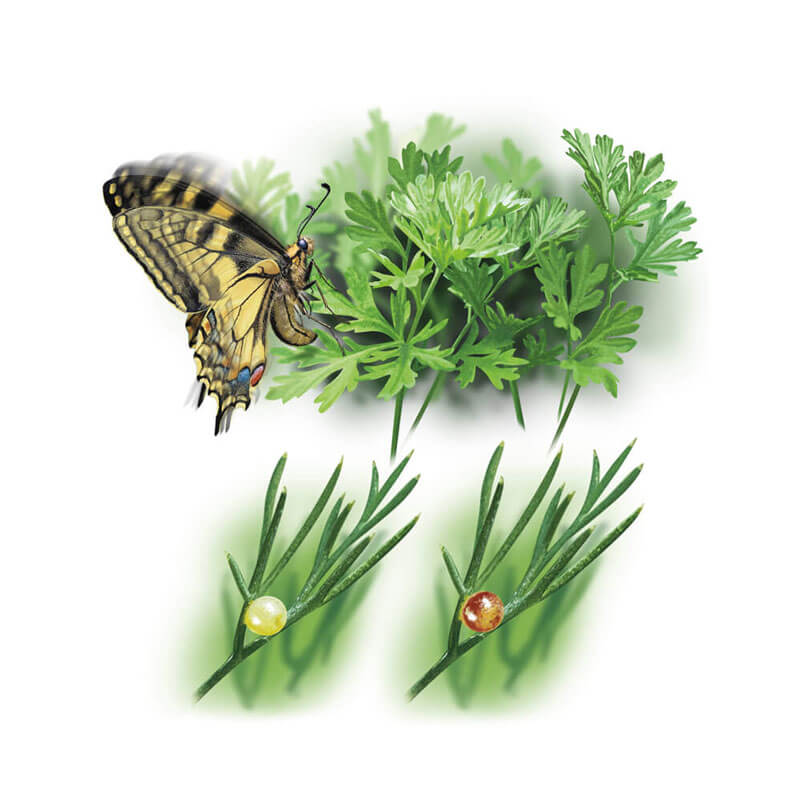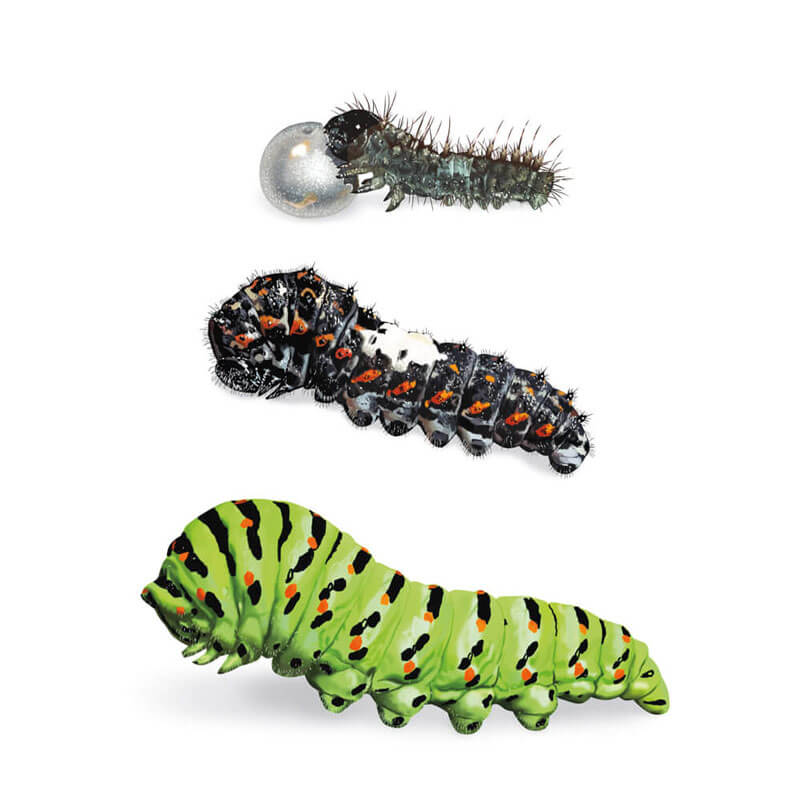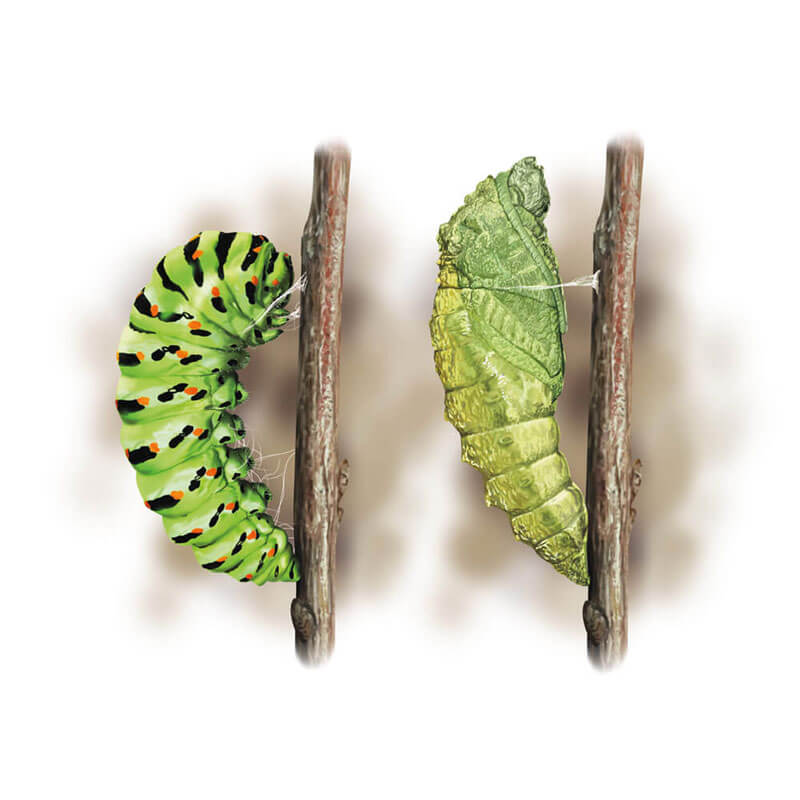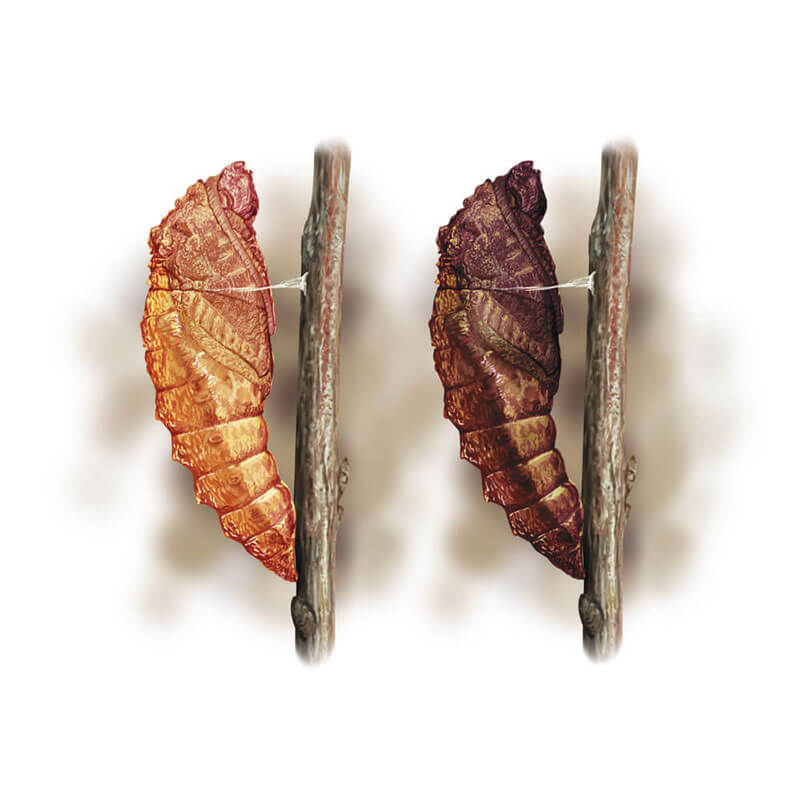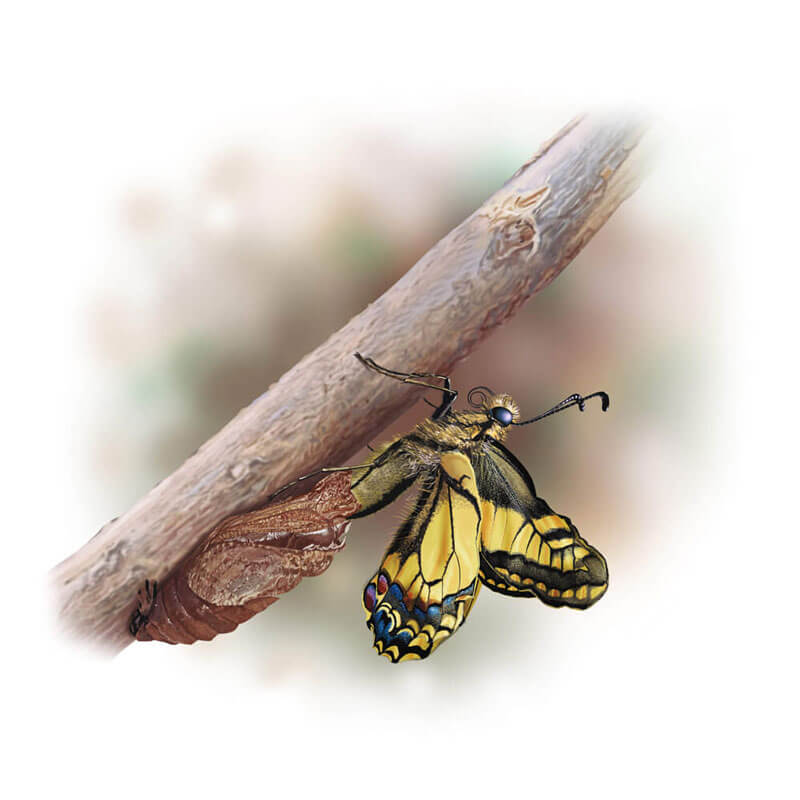


About this book
The book provides comprehensive information about more than fifty rare, endemic and beautiful butterflies representing more than 15 families which inhabit Kazakhstan and more widely Central Asia (410 drawings). For each species, information is provided on distribution, habitats, flight period, biology and etymology, as well as some interesting features of the butterflies’ lives.
Digital and print editions, Alexander B. Zhdanko,
200 pages, 410 colour illustrations
Digital drawings and book design for
© Vladimir Timokhanov
Independently published
Adobe Photoshop
Graphic the tablet
Adobe InDesign
Butterflies of Kazakhstan and Central Asia

The illustrations are made from collectible exemplars based on photos taken in nature. And with the direct consultations of the author of the book — a scientist-lepidopterist. The introductory articles clearly and in detail consider the biology of butterflies. The drawings were created in lifelong and academic poses (top view with indication of scale). Drawings of food plants of caterpillars, caterpillars, pupae and eggs are given.



Ecological-faunist species overview
Large keeled Apollo
Parnassius tianschanicus Oberthür, 1879

♀

♂
Wingspan 75–85 mm.
Distribution: Gissar, Pamir-Alai, Tien Shan, Northeast Afghanistan, Northern Pakistan, Western China. In Kazakhstan: Kyrgyz Ridge, Zailiyskiy and Kungey Alatau Ridge. Ketmen, Terskey Alatau.
Habitats and biology: Mountain meadow slopes usually with outcrops at altitudes of 1600– 3100 m. Flight: May-September.
Etymology: Its toponymic name is "Tyanshansk".

Mating at the Large keeled Apollo

Male on a flower

Scarce swallowtail
Iphiclides podalirius (Linnaeus, 1758)
Wingspan 75–85 mm.
Distribution:Europe across Kazakhstan to Western China.
Habitats and biology: Deciduous and mixed forests, mainly in river floodplains, shrub thickets in low and medium-height mountains, up to heights of 1800 m. Flight: May – August, in two generations. Forage plants — various Rosaceae: Cherry (Cerasus), Almond Amygdalus, Plum (Prunus), Bird Cherry (Padus), Hawthorn (Crataegus), Apple Tree (Malus), Rowan Tree (Sorbus). The caterpillar of all sailboats of the genus Papilio has a type of saccular gland, which, when stimulated, is extended outwards behind the head and emits an unpleasant odor, deterring predators. The chrysalis hibernates.
Etymology: Podalirius (Greek, myth.) — Podalirius, son of Asclepius (Aesculapius), a military doctor of the Achians during the siege of Troy and brother of Machaon.

Butterflies in flight



Red admiral
Vanessa atalanta (Linnaeus, 1758)
Wingspan 48–55 mm.
Distribution: From North Africa through Europe, Central Asia and Siberia to North America and New Zealand. Occurs sporadically in the foothills of the Northern Tien Shan and Dzhungarskiy Alatau. In Kazakhstan: from the Ural region. through the northern and central regions (locally) to Altai, Dzhungarskiy Alatau and Tien Shan.
Habitats and biology: Diverse habitats in valleys and foothills, including cultivated landscapes, gardens and parks. Flight: May — October, sometimes in two generations. Forage plants are Urtica dioica Nettle (Urticaceae family), Carduus Thistle (Astraceae family) and Humulus lupulus hops (Cannabaceae family). The butterfly hibernates. This butterfly belongs to the migratory species, but if the migration routes of the thistle are studied quite well, which flies from the Sahara to Scandinavia in the spring, then there is a species for the admiral, but there are still many mysteries. These butterflies were found on the high mountain passes of the Tien Shan frozen into the ice, along with other insects.
Etymology: Atalanta (Greek myth.), Daughter of the king of Arcadia, fed by a bear, participant in the Calydonian hunt of the Argonauts campaign.


Butterflies on flowers
♂

♂


BACKSIDE ON HOVER
Wingspan 22–28 mm.
Distribution: Altai (ssp.argali), as well as the Saur, Manrak, Kurchumsky ridges (ssp.arkhar Lukhtanov, 1990).
Habitats and biology: Dry rocky slopes from 1000 to 2500 m. Flight period: May-June. The forage plant of the caterpillars is the semi-shrub sharkfish (Oxytropis hystrix) from the legume family (Fabaceae). Caterpillars feed on the flowers and then on the fruit inside the plant pods. The chrysalis hibernates.
Glaucopsyche argali
Glaucopsyche argali Elwes, 1899
Butterflies on the caterpillar’s forage plant, the semi-shrub sharkfish (Oxytropis hystrix)
Southern eyed hawk moth
Guelder-rose
(Viburnum opulus)
Southern eyed hawk moth
Smerinthus kindermannii Lederer, 1853
Wingspan 60–65 mm.
Distribution: Asia Minor and Central Asia.
Habitats and biology: Grassland of different varieties. Flight period: April – May and July – August (two generations). Forage plants — Willow (Salix) (family Salicaeae), Kalina (Viburnum) (family Viburnaceae).
It has been established that hawk moths can fly very fast indeed. Experiments have shown that they can reach speeds of 45–55 km per hour! On this measure, "sphinx butterflies" come second only to dragonflies. Many city residents have of course seen the butterfly’s proboscis, as it is a common sight in the summer on zinnia or petunia flowers in city flowerbeds. With wonderful skill, the butterfly hovers over the flower and sucks out the nectar. The hawk moth holds the record for length of proboscis. The proboscis of the hawk moth Antaeus, for example, which lives in the tropics, reaches a length of 30 cm!
Etymology: The butterfly is named for Albert Kindermann (1810–1860) who collected lepidoptera for many famous lepidopterists in Asia Minor, the Caucasus and Western Altai.
Caterpillar

A hawk moth feeding on the nectar of flowers
Caterpillar
Narrow-bordered bee hawk moth
Hemaris tityus (Linnaeus, 1758)
Wingspan 38–42 mm.
Distribution: From Europe and Asia Minor through Central Asia to Southern Siberia.
Habitats and biology: Steppe and grassland areas in mountains of low and medium height. Flight period: April – June. Fodder plant is scabiosa (Scabiosa) from the Vorsyankov family (Dipsacaceae). The caterpillar is green, with two white stripes on the back. The pupa is black-brown. This interesting hawk moth can usually be seen in the spring, even when there is still snow in the hollows. At first glance, it does not look like a butterfly: it moves clumsily on its transparent wings, more like a bee or a wasp. The female looks carefully for a place suitable for laying her eggs at the base of the rosette of the fodder plant; but when disturbed she flies off immediately to a greater height.
Chrysalis

View digital and print versions of this project on
Buy all versions of the project on
BUTTERFLIES OF THE RED DATA BOOK OF KAZAKHSTAN
Digital drawings and design for
© Institute of Zoology of the Republic of Kazakhstan
Adobe Photoshop
Graphic the tablet
Corel
Draw
About this posters
The posters feature butterflies listed in the Red Data Book of Kazakhstan.

Alexanor or southern swallowtail
Papilio alexanor Esper, 1799
Wingspan 70–80 mm.
Distribution: Southern Europe, Asia Minor to the Middle East, Central Asia to Iran and Afghanistan. In Kazakhstan: Syrdarya Karatau, western part of the Kyrgyz ridges.
Habitats and biology: Stony, mountain slopes covered with xerophilous vegetation, at altitudes of 1000–2700 m. Flight: May — July. Forage plants — various species of Umbelliferae, including Cutter (Falcaria vulgaris), Zhabritsa (Seseli libanotis), Pimple (Torilis heterophylla), Ferula (Ferula ssp.). In the ridge. Karatau caterpillar on Ferula ugamica. The chrysalis hibernates.
This rarest and most original species of sailboat in Kazakhstan and Central Asia is listed in the Red Book of Kazakhstan. In the southern part of Kazakhstan, it is considered good fortune to meet it. It is protected in the Karatau reserve. It is common in southern Europe.
Etymology: Alexanor (Greek) — Aleksanor, “courageous defender” (a variant of the name Alexander).


Southern festoon
Zerynthia polyxena (Denis et Schiffermuller, 1775)
Wingspan 47–50 mm.
Distribution: South and South-East Europe, Asia Minor, South Urals. In Kazakhstan: West Kazakhstan region, Aktobe region (locally).
Habitats and biology: Meadows mainly along river valleys. Flight: April – May. Forage plants — Kirkazon (Aristolochia clematilis) from the Kirkazonov family (Aristolochiaceae).
In appearance, one of the most distinctive of the Kazakhstani butterflies. Typical mesophile. The only representative of the relict monotypic genus.
Etymology: Polyxena (Greek, myth.) — According to the Greek myth, Polyxena, the daughter of the Trojan king Priam and Hecuba, was betrothed to Achilles and sacrificed on Achilles’ tomb by Neoptolemus.

Together we create the perfect


